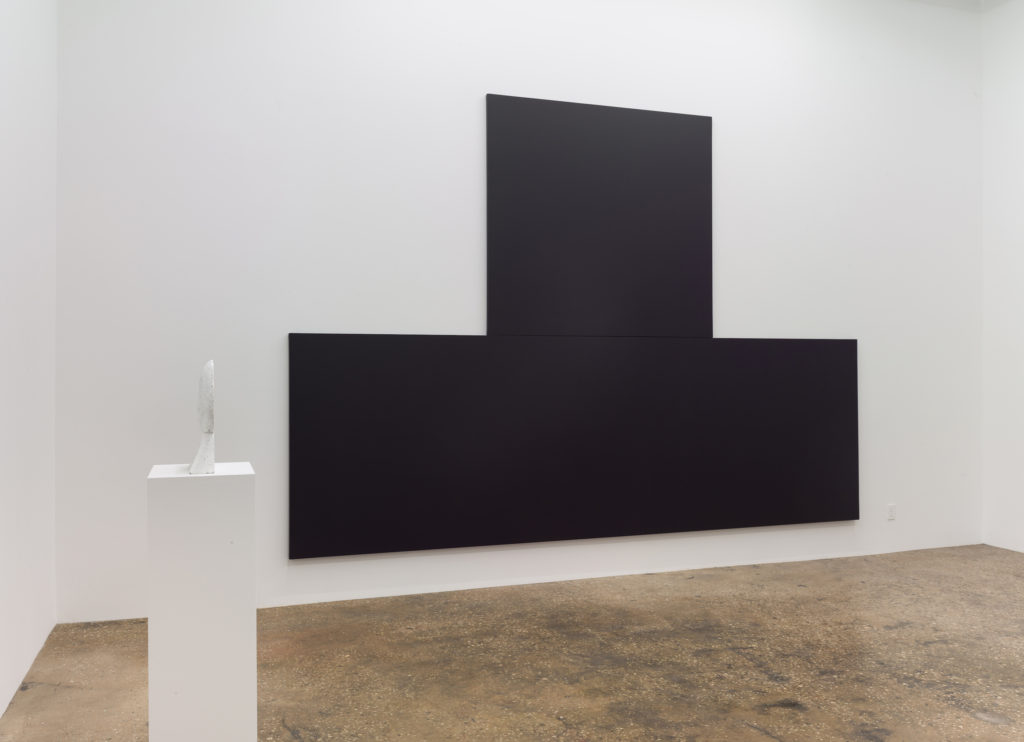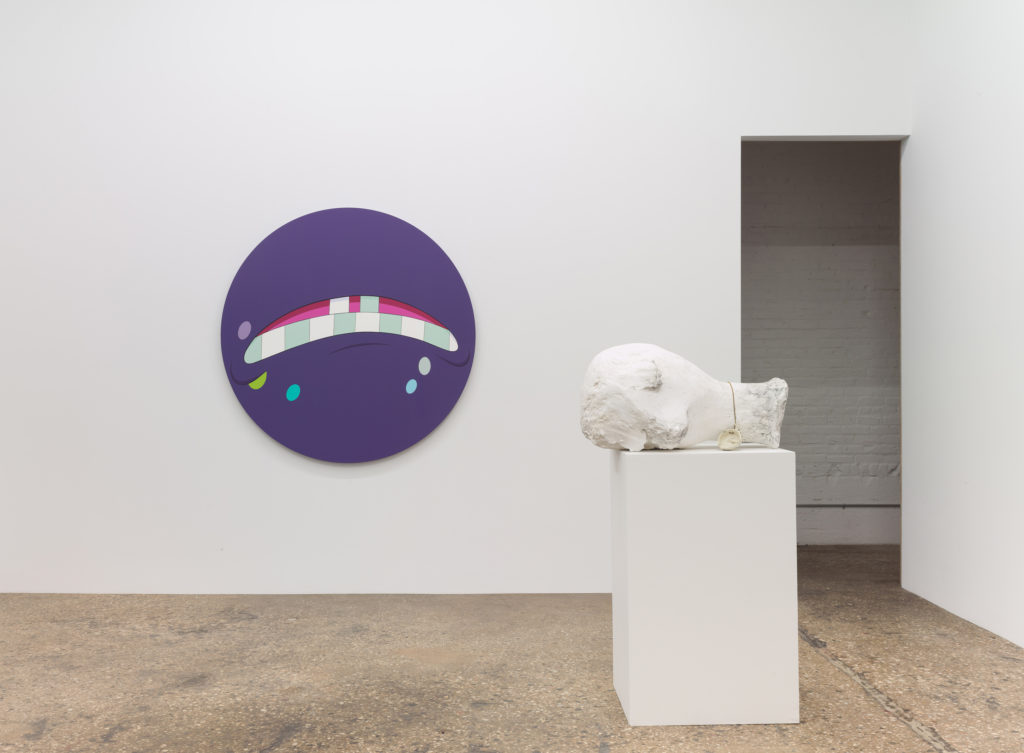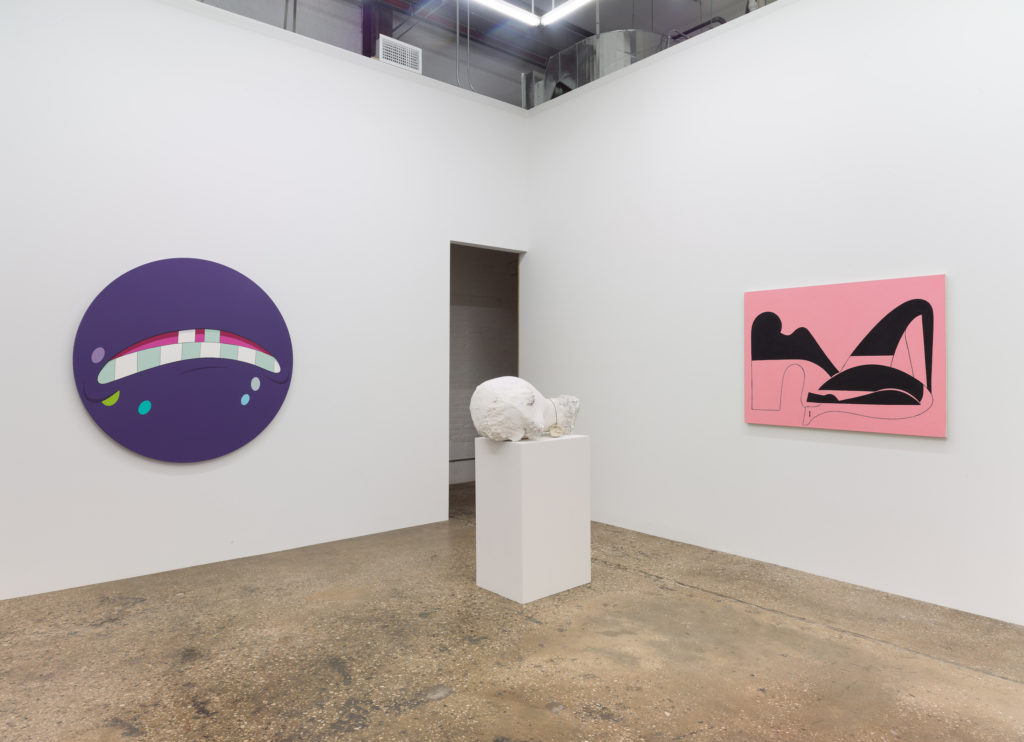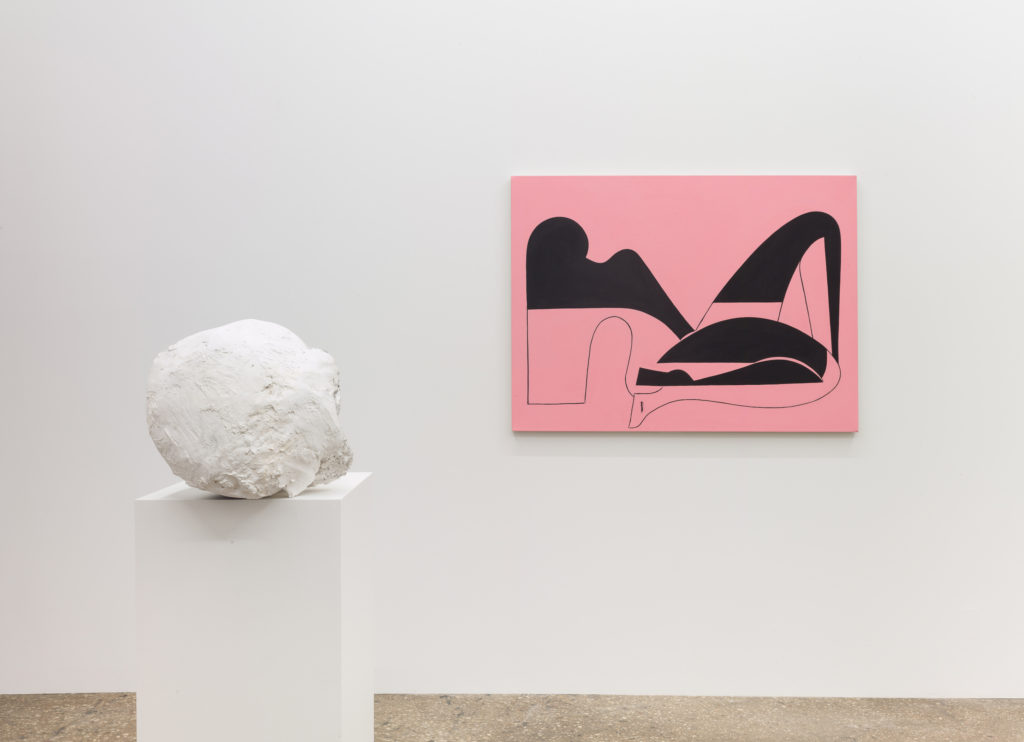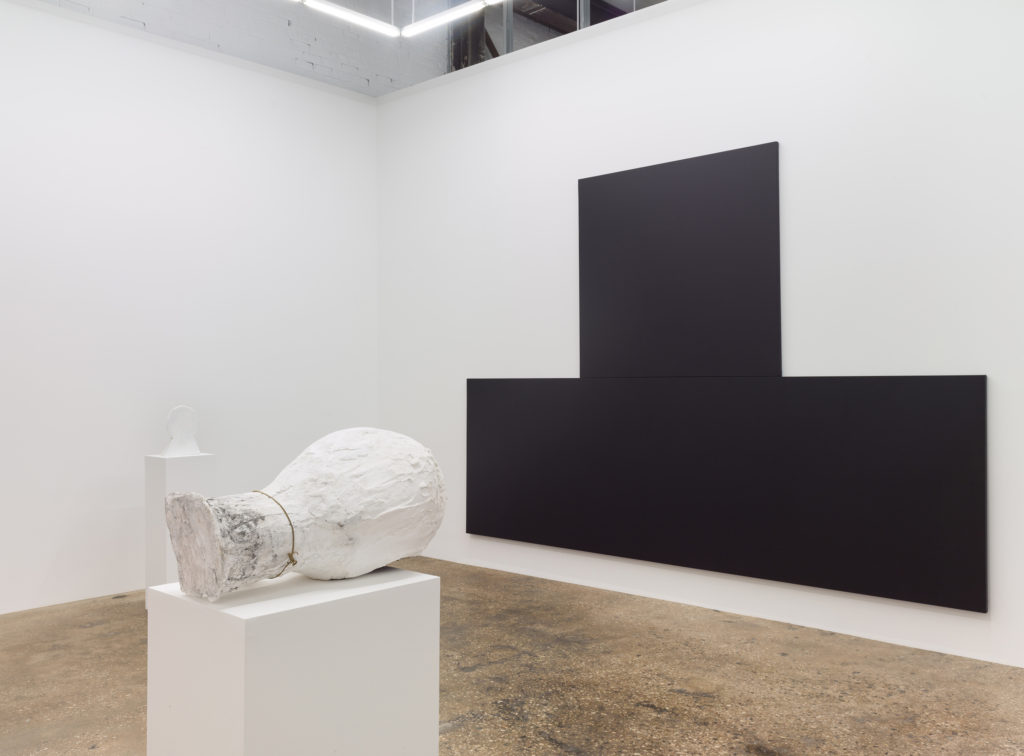Press Release
Century Pictures is pleased to present Brooklyn Bust, a group exhibition featuring works by Joe Bradley, Nicole Eisenman, KAWS, and Denise Kupferschmidt. The works on view are all unexpected takes on traditional representation of the upper human figure. The ubiquity of the bust throughout art history has lent itself to a multitude of formal and stylistic depictions of gods, prominent contemporary figures, political and military leaders, and on. The telling of a culture was often through the bust. Revealing ideals, aesthetic and moral principles, a bust conveyed the story of what a culture strived for, and also what technologies were available, what materials were vetted, what artists and artisans at the highest level could create to incite reverie.
While working in Brooklyn, Joe Bradley, Nicole Eisenman, KAWS, and Denise Kupferschmidt were perceptibly influenced by a decided irreverence to rigid parameters of definition. Self-effacing humor, caustic wit, or a damning social critique is calibrated into these works. The word BUST itself takes on a myriad of interpretations in the vernacular of slang. Brooklyn Bust cheekily invokes the linguistic slippages that change according to the input/mutual interpretation of the viewer. The works here are liminal.
Joe Bradley’s monochromatic painting offers the most minimal cues to suggest an anthropomorphic rendering. An “intentional shoddiness,” emblematic of Bradley’s works from this series, communicates a general disappointment with the narrative of twentieth-century painting. Stretchers are store bought, and surfaces are less than pristine. The artist has described these works as expressively “pathetic” which is at odds with the heroic scale of the totemic visage. Rather than reducing subject to assert the painting’s objecthood, Bradley proposes a “bust” whose subject derives from the lexicon and semiotics of painting itself.
Bridging graffiti, pop art, and consumer culture, KAWS’ works convey an underlying wit, while confirming his agility as an artist. He has primarily looked to and appropriated pop-culture animations to form an artistic vocabulary for his paintings, drawings, and sculptures. KAWS’ cast of hybrid cartoon/human characters have generalized archetype names – Chum, Companion, Accomplice – to express the gamut of the human condition.
Denise Kupferschmidt’s Keyhole Head echoes the shape of a keyhole, communicating a secretive space that lingers along the edges of figuration and abstraction, voyeurism and objectivity. Meanwhile Kupferschmidt’s Shoes (Pink) incite the language of advertising in a highly graphic style and a purposeful nod to Henri Matisse, touching on the everyday, from blatant consumerism, to fine art and back again.
Nicole Eisenman’s Sleeping Frat Guy presents a rough-hewn plaster bust that rests upon a pedestal, which acts as both framing device and support. Eisenman unveils the precariousness of masculinity by presenting vulnerability through the gestures of sleep. The figure, bulbous in form, upends its historical predecessors, refuting its archetype of power and exposing instead the fragility of normative gender constructs. The radical tenor of these sculptures, while whimsical, are steeped in political ramifications: the artist’s figurative fountain installation, featured this year in Skulptur Projekte Münster 2017, which prominently displayed a transgender figure, was defiled and spray painted with a swastika just days before the most recent historic German vote. Eisenman’s creation of a space in contemporary art for LGBTQ bodies and experiences unhinges gender binaries, affirming a new vision.
